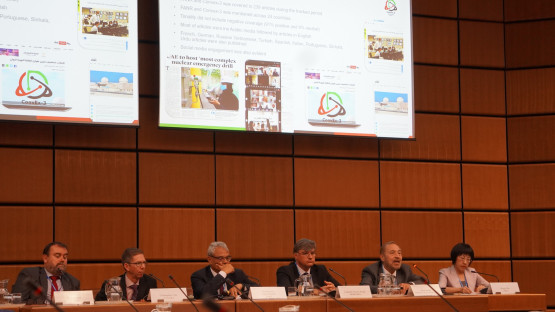The IAEA’s essential role in assisting countries during nuclear and radiological incidents and emergencies was the focus of a side event, "How the IAEA Supports Member States in the Event of Nuclear and Radiological Incidents and Emergencies," during the recent IAEA 67th General Conference. The event featured a panel discussion where representatives from Canada, China, France, Romania, the United Arab Emirates and the United States of America shared their countries’ successful cooperation with the IAEA’s Incident and Emergency Centre (IEC).
Deputy Director General and Head of the Department of Nuclear Safety and Security, Lydie Evrard emphasized the importance of emergency preparedness and response (EPR) in maintaining global nuclear safety and security in her opening remarks. She underscored the IAEA's unwavering commitment to support countries in adapting to new risks and hazards by remaining at the forefront of developments in the field.
“The significance of resilient frameworks for emergency preparedness and response and their invaluable contribution to enhancing the safety and security of nuclear facilities and materials worldwide cannot be overstated,” she said.
A presentation by the IAEA provided an overview of IEC's critical role in preparedness and response. The IEC focuses on safety standards, capacity building and emergency preparedness review (EPREV) missions. It offers international agreements, guidance, procedures and tools to support the application of EPR safety standards.
The Director of the IEC, Carlos Torres Vidal, highlighted the importance of support from countries to strengthen the international response framework for nuclear and radiological incidents and emergencies. “Our Member States provide invaluable support for the IEC. Your extrabudgetary contributions, cost-free experts and technical advice are crucial in strengthening our capacities to respond to events. These events range from nuclear power plant accidents to finding lost radioactive sources and providing medical care for radiation overexposure. We thank you for your generosity and commitment,” he said.
The IEC's roles, as defined by international treaties and agreements, include acting as a focal point for notifications and official information exchange; the provision of public information; assessment of potential emergency consequences; provision of assistance upon request; and coordination of inter-agency responses.







